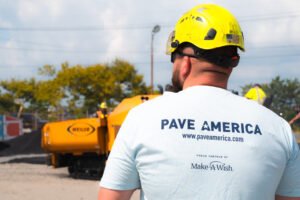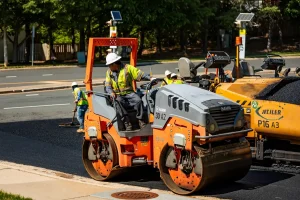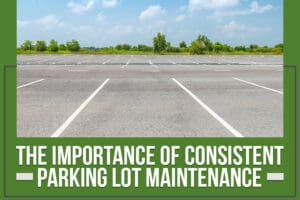- Updated September 5, 2025
As a property or business owner, you know the importance of keeping your pavement in good condition. Minor cracks and surface wear can often be handled with quick repairs, but over time, larger and more serious issues begin to appear. While it’s essential to keep on top of minor repairs as they occur, eventually, you’ll need to address more extensive problems. Few things are more frustrating than driving over a pothole and feeling your vehicle jolt, but potholes are just one of the many pavement failures you may encounter.
At Brothers Paving & Concrete, we’re breaking down the seven most common types of pavement failures, what causes them, and the best ways to repair them so you can keep your surfaces safe, smooth, and looking their best.
Common Types of Pavement Failures and Their Solutions
1. Alligator Cracking
Alligator cracking is a common pavement failure caused by various factors, including poor drainage, excessive traffic, and improper construction. This type of failure is characterized by cracks that resemble the scales of an alligator. Alligator cracking can be remedied by milling the surface and applying a new asphalt layer. It’s important to have alligator cracks repaired as soon as they are noticed. If ignored, you can end up with base failure and costly full-depth repairs.
2. Block Cracking
Block cracking is another common type of failure caused by the expansion and contraction of the pavement. Unlike other types of asphalt damage, block cracking is typically caused by aging asphalt or freeze-thaw cycles as opposed to heavy traffic. This type of failure is characterized by evenly spaced cracks and runs parallely. The remedy for block cracking is to mill and fill the gaps with hot asphalt.
3. Edge Cracking
Edge cracking is a common pavement failure that occurs at the edges of the pavement. It is caused by poor drainage, improper construction, or excessive traffic. Edge cracking can be remedied by patching the hole with new asphalt.
4. Joint Reflection Cracking
Joint reflection cracking is a common pavement failure that occurs at joints in the pavement. It is caused by poor joint construction, thermal expansion, contraction, or excessive traffic. Joint reflection cracking can be remedied by milling the surface and applying a new asphalt layer.

5. Potholes
Potholes are common pavement failures that occur when the pavement is damaged. It is caused by poor drainage, improper construction, or excessive traffic. Water infiltration and freeze-thaw cycles from Virginia’s weather can accelerate growth of potholes, as well. To solve this problem, patch the affected area with new asphalt or pavement material.
6. Rutting
This form of failure stems from poor drainage, poor construction, or heavy usage. Milling the surface and laying a fresh layer of asphalt can repair rutting. It’s extremely important to fix rutting as soon as you recognize the problem. This type of asphalt damage can collect water and cause hydroplaning, leading to safety hazards and liability on your property.
7. Depression
Depression occurs when the soil beneath the pavement settles. As a result, the pavement sinks in, leading to trip hazards and pooling water that worsens during freeze-thaw cycles. As a cure, resurface or fill the depression with concrete or asphalt.
Preventing Pavement Failures Before They Start
Routine Sealcoating
Sealcoating creates a protective barrier on the surface of your asphalt, shielding it from UV rays, water, oil, and chemicals. By sealing every 2–3 years, you can extend the life of your pavement and prevent small cracks from spreading into larger failures.
Proper Drainage
Standing water is one of the biggest enemies of asphalt. Without proper drainage, water seeps into cracks and weakens the base. Installing curbs, gutters, or grading the surface ensures water flows away from your pavement, reducing the risk of potholes and rutting.
Regular Inspections
Catching problems early saves money. Scheduling seasonal pavement inspections helps identify small cracks, minor settling, or drainage issues before they escalate. Proactive maintenance is always less costly than large-scale repairs.
Professional Pavement Repair in Northern Virginia
Pavement issues don’t just look bad—they can be unsafe and expensive if you let them go. By knowing the signs of issues like cracks, potholes, or rutting, you can take action before small concerns turn into major expenses.
If you’re dealing with any of these pavement challenges, the team at Brothers Paving & Concrete is here to help. We proudly serve property owners across Manassas, Arlington, and Northern Virginia with professional asphalt and concrete repair solutions. Contact us today for a free estimate and let us keep your pavement safe, durable, and looking its best.



